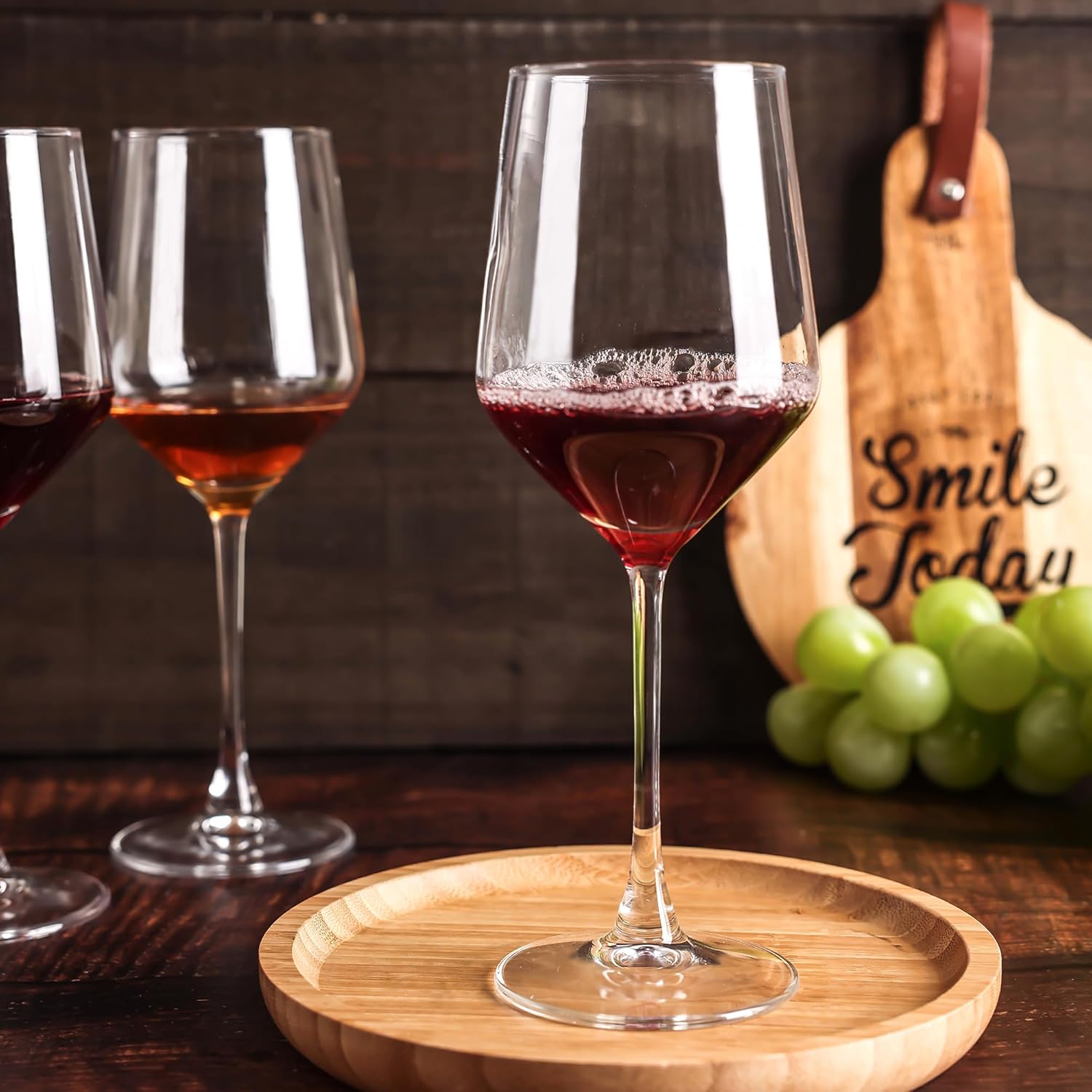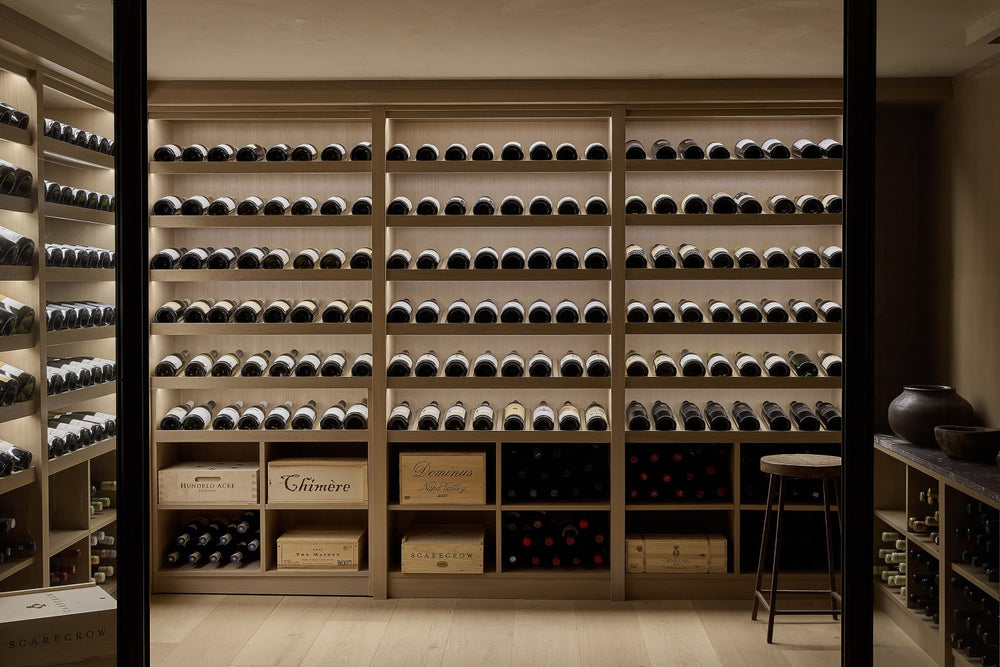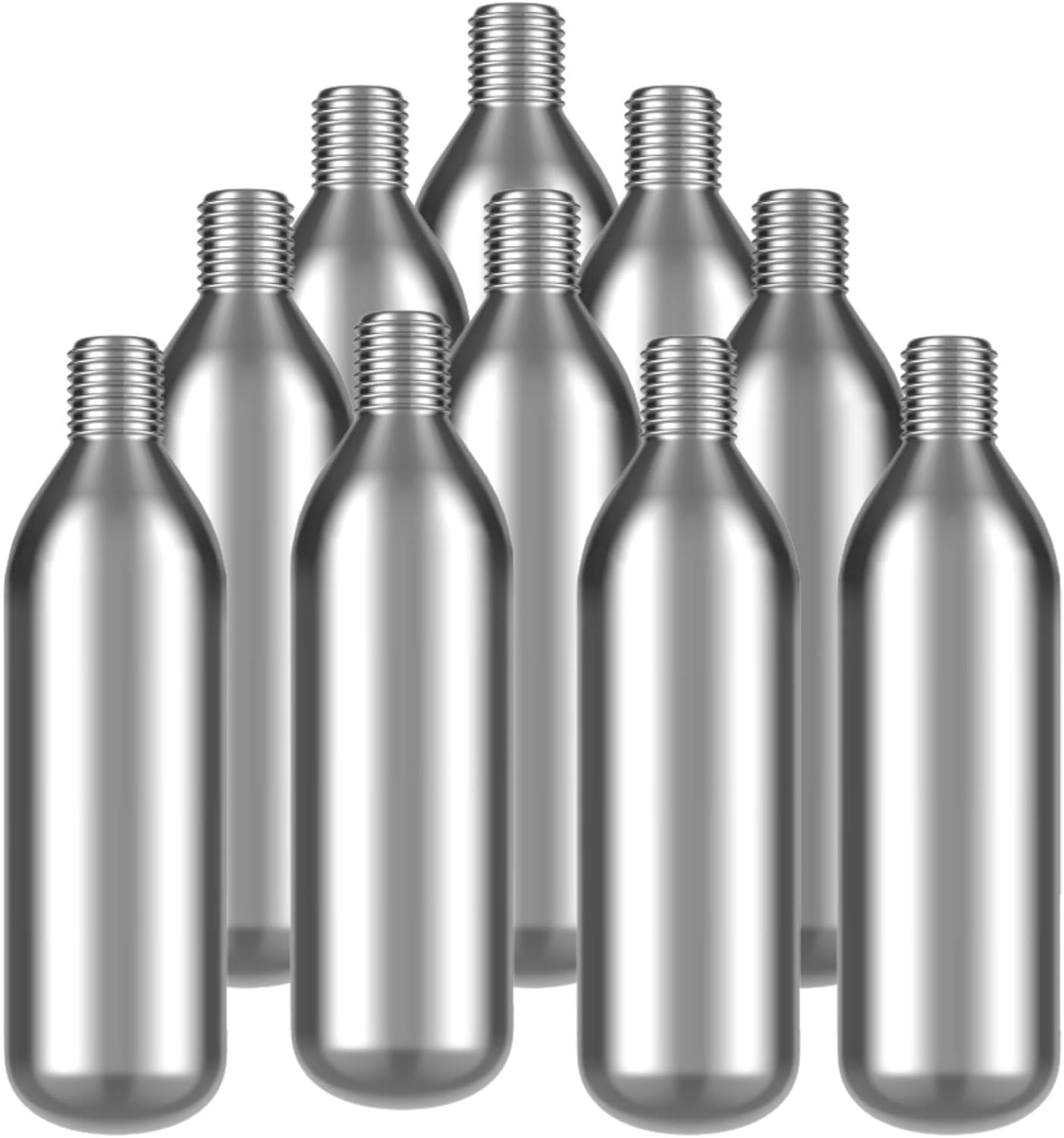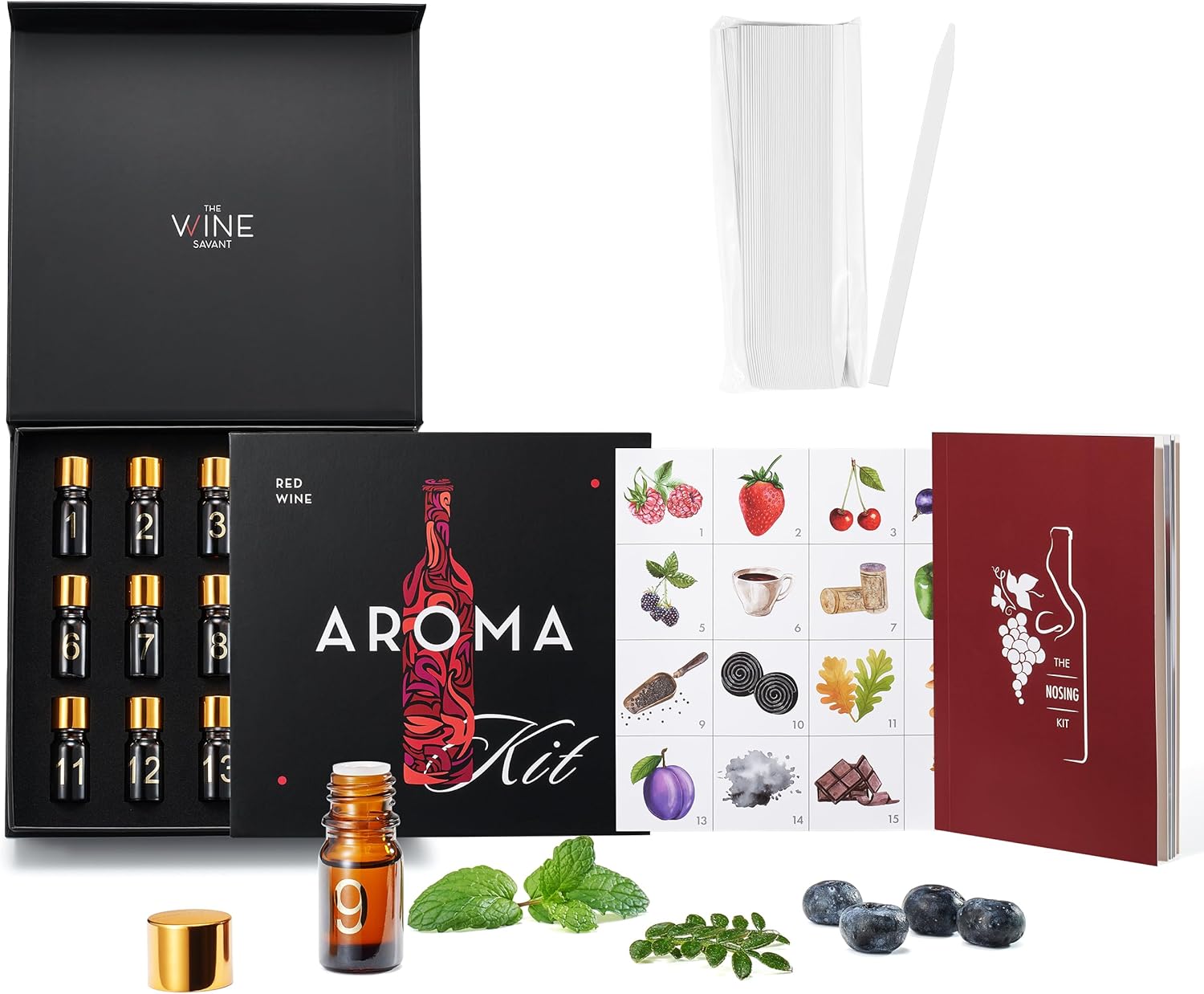The 5 Best Wine Stoppers to Keep Your Wine Fresh
It’s one of the most familiar and frustrating sounds for any U.S. wine lover: the *glug, glug, glug* of a good, half-finished bottle of wine going down the kitchen sink. You had one glass. You told yourself you’d have another tomorrow. But tomorrow became three days from now, and when you poured a glass, it was sharp, vinegary, and lifeless. The original cork, which you wrestled back into the neck, did nothing. That $30 Cabernet is now drain cleaner.
This is the great battle every wine drinker faces, and your opponent is **oxidation**. The moment you pull the cork, you expose the wine to its mortal enemy: oxygen. A little air is good—that’s what aerating and decanting are all about. But after a few hours, oxygen begins to break down all the wonderful fruit, acid, and tannins, turning it into a dull, flat, lifeless liquid. Shoving the original cork back in is a fool’s errand. It doesn’t fit, it’s been compromised, and it creates a terrible seal.
Here at Wine Army, we believe that enjoying wine should be a pleasure, not a race against the clock. A high-quality wine stopper is one of the most critical wine cellar essentials, bar none. But “wine stopper” is a broad term. There are simple silicone plugs, high-tech vacuum pumps, expanding levers, and pressurized champagne corks. Which one do you *actually* need? We tested the most popular and highly-rated wine stoppers on Amazon to find the 5 best tools for every type of U.S. wine drinker, from the casual sipper to the serious host.
What’s In This Guide
- The Great Wine Enemy: Why You Need More Than a Cork
- Still vs. Sparkling: A Critical Difference
- How Long Does Wine *Really* Last With a Stopper?
- At-a-Glance: The 5 Best Wine Stoppers
- 1. The Gold Standard (Preservation): Vacu Vin Wine Saver Pump
- 2. The Best Mechanical Stopper: OXO SteeL Expanding Wine Stopper
- 3. The Champagne Essential: MiTBA Champagne Stopper
- 4. The “Daily Driver” (Set of 4): Rabbit Bottle Stoppers
- 5. The Elegant Gift: ToGoode Crystal Wine Stoppers
- Beyond the Stopper: Your Full Wine Preservation Toolkit
- Frequently Asked Questions (FAQ)
The Great Wine Enemy: Why You Need More Than a Cork
As we said, the enemy is **oxygen**. But oxygen is also a *friend*. This is the great paradox of wine. When you first open a bottle, especially a young, “tight” red, it needs to “breathe.” This is why we use decanters and aerators. This initial burst of air softens the tannins and “opens up” the aromas, making the wine more expressive.
But this is a process that needs to be *stopped*. Once the wine is “open,” the clock is ticking. Oxidation is an aggressive chemical reaction that won’t stop. After about 12-24 hours, those beautiful aromas will start to fade, and the sharp, acidic “vinegar” taste (from acetic acid) will begin to take over.
Why Your Original Cork is Useless:
- It’s Now the Wrong Shape: After being pulled out, the “wet” end of the cork is expanded. Shoving it back in is a nightmare. You’re usually forced to use the “dry” end, which has been exposed to dust and who-knows-what else.
- It’s Tainted: The “wet” end is… wet. It’s a prime breeding ground for bacteria if left on a counter. You’re just re-introducing that back into your wine.
- It’s Not a Seal: Even if you get it in, it’s not the same airtight seal it was before. It’s a “plug,” not a “stopper.” It’s doing almost nothing to stop the millions of oxygen molecules *already in the bottle* from doing their work.
A dedicated wine stopper is a purpose-built tool. It’s one of the first accessories every host needs because it’s designed to be clean, easy to use, and, most importantly, to create a *far* better seal than the original cork ever could. It’s the first step in proper wine storage after opening.
Still vs. Sparkling: A Critical Difference
This is the most important concept in this entire guide, and it’s a mistake we see all the time. You **CANNOT** use the same stopper for your Cabernet and your Cava. They are built for two opposite jobs.
Still Wine (Reds, Whites, Rosés): * **The Problem:** Oxygen is *in* the bottle. * **The Goal:** To create an airtight seal and, ideally, *remove* the oxygen already in the bottle. * **The Tools:** Simple plugs, expanding stoppers, and vacuum pumps.
Sparkling Wine (Champagne, Prosecco, Cava):** * **The Problem:** The bubbles (dissolved CO2) are trying to *escape*. * **The Goal:** To *preserve* the pressure inside the bottle and keep the bubbles from going flat. * **The Tools:** Heavy-duty, clamp-style stoppers that lock onto the bottle’s lip to fight the 70-90 PSI of pressure.
A Critical Safety Warning
NEVER use a regular wine stopper (especially a vacuum pump stopper) on a bottle of sparkling wine. At best, it won’t work. At worst, the pressure from the bottle will build up and launch the stopper across the room like a projectile, creating a serious hazard. You *must* use a dedicated, locking champagne stopper.
How Long Does Wine *Really* Last With a Stopper?
Let’s manage expectations. No stopper on this list, not even the best one, will make your wine last for weeks. This is a crucial Coravin vs. Vacu Vin distinction: a “stopper” is for *days*, while a “preservation system” (like a Coravin that uses argon gas) is for *weeks or months*.
Here’s a realistic timeline for a half-full bottle in a U.S. household, assuming you also put it in the fridge (yes, even reds!):
- No Stopper (Original Cork): 12-24 hours, tops.
- Simple Stopper (Rabbit Plug, Crystal Stopper): 1-2 days. It’s a “cap,” not a preserver. It’s for the bottle you *know* you’ll finish tomorrow.
- Mechanical Stopper (OXO Expanding): 2-3 days. The airtight seal is a big step up.
- Vacuum Pump (Vacu Vin): 3-5 days for most reds, 5-7 days for acidic whites. This is the clear winner for preservation.
- Champagne Stopper (MiTBA): 1-3 days. The bubbles will be less “aggressive” on day 3, but it will still be a pleasant, sparkling experience.
At-a-Glance: The 5 Best Wine Stoppers
| Product | Type | Preservation | Best For |
|---|---|---|---|
| Vacu Vin Wine Saver | Vacuum Pump | Excellent (3-5 Days) | True Preservation |
| OXO SteeL Expanding | Mechanical (Expanding) | Good (2-3 Days) | Set-it-and-Forget-it |
| MiTBA Champagne Stopper | Sparkling (Pressure Lock) | Excellent (1-3 Days) | Sparkling Wine / Safety |
| Rabbit Bottle Stoppers | Silicone Plug | Poor (1-2 Days) | Casual / Daily Use |
| ToGoode Crystal Stopper | Decorative (Gravity) | Very Poor (1 Day) | Dinner Parties / Gifting |
1. The Gold Standard (Preservation): Vacu Vin Wine Saver Pump
The Original Vacu Vin Wine Saver Pump with 2 Stoppers

This is it. The icon. If you’ve ever worked in a U.S. restaurant or bar, you know this tool. The Vacu Vin is not just a stopper; it’s a “wine saver.” It’s the only one on this list that actively *removes* the enemy. The concept is simple: you insert the proprietary rubber stopper, place the pump on top, and pump. You are physically sucking the air out of the bottle, creating a near-vacuum that slows oxidation to a crawl. You’re rewarded with a “click” sound when you’ve reached the optimal vacuum.
This is the clear choice for the person who is serious about preservation. It’s for the person who buys a nice bottle from a wine subscription box and wants to enjoy it over 3 or 4 nights. It’s not a gimmick; it genuinely works and will extend the life of your still wines by 3-5 days. It is the absolute, hands-down winner for pure function. It’s the perfect, most-referenced tool in any Coravin vs. Vacu Vin debate for its unbeatable value.
(+) Pros
- Actively removes oxygen, dramatically slowing oxidation
- Extends wine life for 3-5+ days
- Patented “click” sound provides feedback
- Excellent value for the preservation it offers
- Stoppers are reusable and washable
(-) Cons
- Requires manual pumping (a minor workout)
- Stoppers are proprietary and easily lost
- **CANNOT** be used for sparkling wine
2. The Best Mechanical Stopper: OXO SteeL Expanding Wine Stopper
OXO SteeL Expanding Wine Stopper

This is the “set-it-and-forget-it” champion. From the beloved U.S. brand OXO, this stopper is a marvel of engineering. You simply insert the stopper into the bottle and flip the lever down. This action causes the internal silicone stopper to expand outward, creating a completely airtight seal that is so good, you can often store the bottle on its side in the fridge (though we always recommend upright storage just in case).
This stopper does *not* remove air, so its preservation time is less than the Vacu Vin. However, it’s 100x easier to use. It’s a one-second, “set it and forget it” motion. The stainless-steel construction looks professional and is incredibly durable. Its best feature is its low-profile design. Once the lever is down, it’s flat, allowing the bottle to easily fit on a refrigerator shelf—a common problem with tall, bulky stoppers. This is the perfect tool for the person who wants 2-3 days of preservation with zero effort, making it a great companion for storing wine without a fridge (just in a cool pantry).
(+) Pros
- Incredibly easy one-flip lever
- Creates a truly airtight seal
- Durable and beautiful stainless-steel design
- Low profile fits easily in refrigerator shelves
- Can (usually) be stored horizontally
(-) Cons
- Does not remove air; preservation is good, not great (2-3 days)
- More expensive than a simple plug
3. The Champagne Essential: MiTBA Champagne Stopper
MiTBA Champagne Stopper

As we’ve established, you *need* a dedicated tool for your bubbly. This is the one. The MiTBA is a classic, bomb-proof design that is built to handle pressure. You’ll notice it looks nothing like the other stoppers. You place it on top of the sparkling wine bottle, and two hinged steel “wings” fold down and *lock* onto the thick lip of the bottle. This design, combined with a spring-loaded silicone seal, creates a seal so tight it actually *fights* the pressure, keeping the CO2 in the wine.
It’s the only way to keep a half-finished bottle of sparkling wine from becoming sad, flat, and useless 12 hours later. A good Champagne stopper can preserve a bottle’s bubbles for 1-3 days, allowing you to have a single glass of Prosecco on Friday and another on Sunday. It’s a non-negotiable tool, and this one is highly-rated, all-metal, and incredibly effective. It’s the perfect gift for the “mimosas-on-the-weekend” person in your life.
(+) Pros
- Specifically designed to hold pressure and preserve bubbles
- Durable, all-metal construction
- Easy to lock and unlock
- Essential safety tool for sparkling wine
(-) Cons
- Can *only* be used for sparkling wine
- Can be a bit stiff to lock the first few times
4. The “Daily Driver” (Set of 4): Rabbit Bottle Stoppers
Rabbit Bottle Stoppers (Set of 4)

Sometimes, you don’t need a high-tech solution. You just need a “cap.” This is for the bottle of affordable wine you opened to pair with your pizza and you *know* you’re going to finish it tomorrow. You just want to keep dust, fruit flies, and the smell of your fridge’s leftovers out of it. For this job, the Rabbit silicone stoppers are perfect.
These are simple, flexible, and effective “plugs.” The graduated-rib design allows them to fit in almost any bottle neck (wine, olive oil, etc.) and create a decent seal. It’s not airtight and it’s not a vacuum, so preservation is minimal. But their “pro” is convenience. They’re cheap, they’re colorful (so you can’t lose them), they’re easy to wash, and they get the basic job done. They’re also perfect for taking on the go, perhaps in a wine bag for a picnic, to ensure you can seal your bottle for the trip home.
(+) Pros
- Inexpensive and comes in a multi-pack
- Very easy to insert and remove
- Flexible silicone fits many bottle types
- Bright colors are easy to find in a drawer
(-) Cons
- Offers minimal preservation (1 day, maybe 2)
- Will absolutely leak if the bottle is laid on its side
- Just a “plug,” not a “preserver”
5. The Elegant Gift: ToGoode Crystal Wine Stoppers
Yougoals Crystal Wine Stoppers (Set of 2)

This is the “dinner party” stopper. The other four stoppers are tools of function; this one is a tool of *form*. When you’re hosting a party and you’ve just opened several bottles of organic wine for your guests, you don’t want a clunky plastic pump on the table. You want something elegant. This crystal stopper is just that. It’s heavy, it looks beautiful, and it makes a fantastic gift for a wine lover.
Let’s be very clear: this offers **almost zero preservation**. It’s a gravity stopper. Its job is to sit in the bottle, look pretty, and keep dust out for the 2-3 hours the bottle is on your dinner table. That’s it. It’s a “placeholder,” not a “preserver.” But for that job, it’s perfect. It’s the accessory you use alongside your best red wine glasses and your finest decanter. It’s part of your “presentation” toolkit, and for that, it’s a 10/10.
(+) Pros
- Absolutely beautiful and elegant
- Heavy, high-quality crystal feel
- Makes a perfect host/hostess gift
- Looks great on a dinner table
(-) Cons
- **Zero preservation**; purely decorative
- Gravity seal will leak instantly if tipped
- Can be fragile if dropped
Beyond the Stopper: Your Full Wine Preservation Toolkit
A wine stopper is just one piece of the puzzle. To truly get the most out of every bottle, you need to see your accessories as a “system” that works together. This is the difference between a casual drinker and a true enthusiast. The full “wine journey” has a tool for every step.
A Complete Wine Accessory Ecosystem
- The Open:** It starts here. A clean opening is essential. A good foil cutter creates a clean line, and a quality electric wine opener or waiter’s key pulls the cork without shredding it.
- The Chill:** Temperature is everything. A bottle of white wine is useless without a wine chiller sleeve to bring it to temp quickly, or an electric wine chiller to hold it there.
- The Prep:** A young red needs air. A decanter is the classic tool, while an electric aerator is the modern, high-speed solution.
- The Serve:** The right glass makes the wine. Pouring a bold Cabernet into glasses with a large bowl allows the aroma to collect, transforming the experience.
- The Pause (This is Us!):** You’re halfway through the bottle. You insert your **Wine Stopper** of choice to protect it for the night.
- The Save:** You’re done for the week. This is where your stopper (like a Vacu Vin) comes in. You pump the air out and place the bottle in the fridge.
- The Long-Term:** For that *really* special bottle you just want one glass of, you graduate to a preservation system. This is the whole Coravin vs. Vacu Vin debate.
All of these tools, from a simple stopper to a modular wine rack, are part of the joy of the hobby. They are eco-friendly solutions because they prevent waste and help you get the full value out of every single bottle you purchase.
Frequently Asked Questions (FAQ)
Q: What is the absolute best way to keep wine fresh?
A: The “best” way is to prevent oxygen from ever touching it, which is the Coravin system. The *best practical* way (and our top pick) is the **Vacu Vin Wine Saver**. By removing the air, you are actively stopping the oxidation that ruins wine. It’s the most effective tool for its price on the market, bar none.
Q: Can I lay a bottle on its side with a stopper in it?
A: We **strongly** recommend against it. Most stoppers (especially simple plugs and decorative ones) will leak instantly. The only one on this list that *claims* to be leak-proof is the **OXO Expanding Stopper**, and in our tests, it holds up. However, the safest place for an open bottle is always upright in your refrigerator door.
Q: I put a stopper on, but my wine still tasted bad the next day. Why?
A: You probably used a simple “plug” (like the Rabbit or a decorative one). These don’t preserve anything; they just cover the hole. You *must* use a tool that either removes the air (Vacu Vin) or creates a truly airtight mechanical seal (OXO) to get preservation into “day two” and beyond. Also, *always* put the open bottle in the fridge (even reds!)—cold slows down chemical reactions, including oxidation.
Q: How do I clean my wine stoppers?
A: Never put them in the dishwasher. The heat can ruin the seals. All of these should be hand-washed with a little soap and warm water, then rinsed *very* thoroughly (you don’t want soap-flavored wine). Let them air dry completely before the next use.
Q: Why is a Champagne stopper so different? It looks scary.
A: It’s different because it’s a tool of *safety*. A Champagne bottle is a “pressure vessel,” a term you should know. It has 2-3 times the pressure of a car tire. The stopper needs those big metal clips to *grip the bottle’s lip* and hold on for dear life. A simple plug would be shot out with incredible force. It’s not scary—it’s the *only* safe way to save your bubbles.
The Final Word: Stop Wasting Your Wine
There is no longer any excuse for pouring your hard-earned money down the drain. For less than the price of one good bottle of wine, you can buy a tool that will save *hundreds* of future bottles from a vinegary grave.
Your choice comes down to your needs: * **For True Preservation:** Get the **Vacu Vin Wine Saver**. It’s the undisputed champion of function. * **For Effortless Convenience:** Get the **OXO Expanding Stopper**. It’s the best “one-and-done” tool. * **For Bubbles:** Get the **MiTBA Champagne Stopper**. It’s not optional; it’s essential.
A good wine stopper is the final, and one of the most important, accessories in your collection. It’s the tool that gives you the freedom to open any bottle, any time, just for one glass, without a shred of guilt. And that’s what enjoying wine is all about.
























